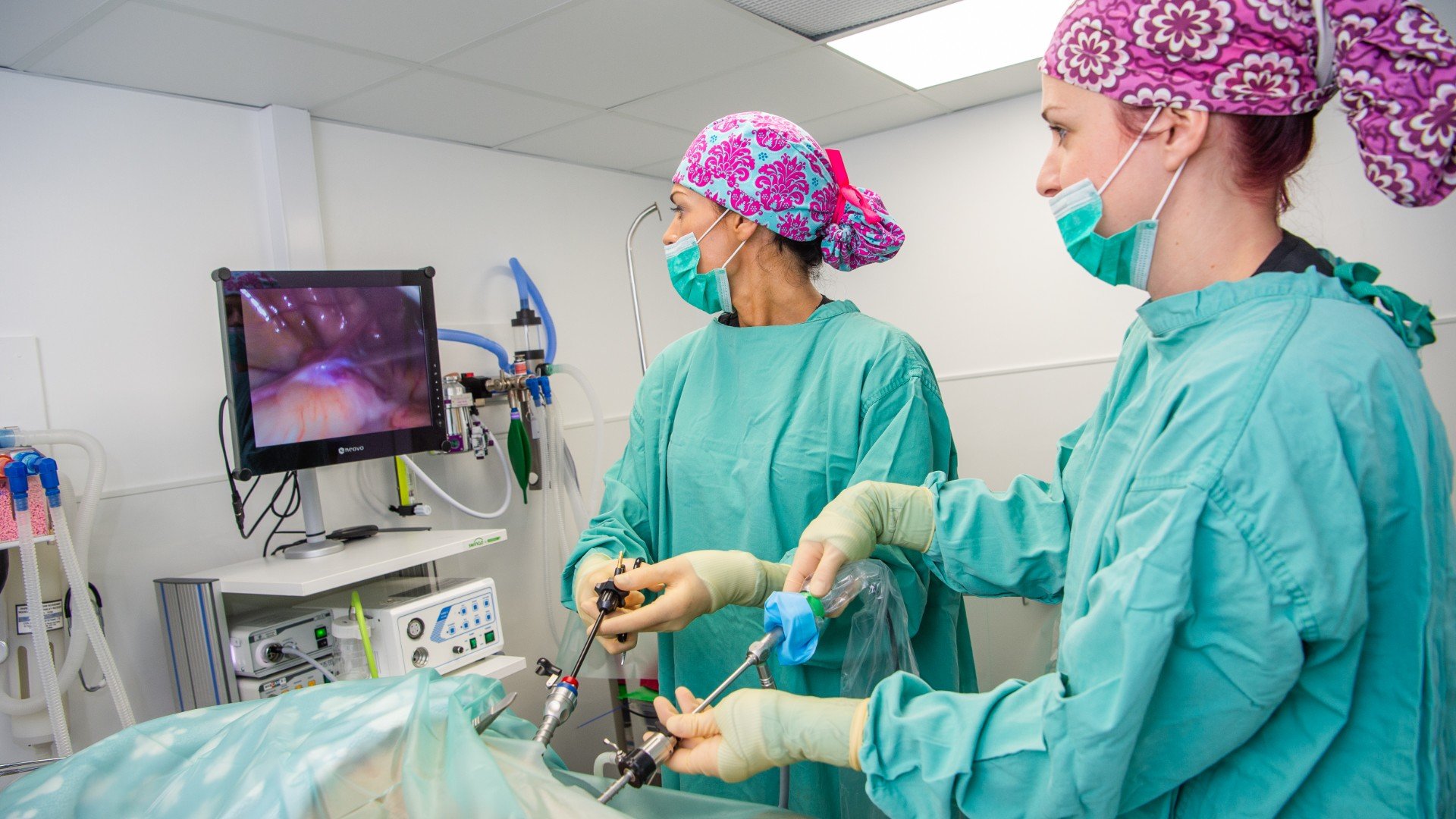
Laparoscopy Surgery
Laparoscopy is a growing area in veterinary surgery.
Important information
Laparoscopy is a minimally invasive surgical technique to explore the abdomen with two to three small ‘keyhole’ incisions. A camera is introduced as well as fine instruments allowing a range of procedures to be performed.
In human medicine ‘keyhole’ surgery or laparoscopy has been used for many years given its reduced surgical trauma and quicker recovery times compared to traditional 'open' surgery.
In veterinary medicine the same advantages are seen. As specialised equipment and training is required however not all practices have these facilities. At Companion Care many of our surgeries have invested considerably in their team and kit to make minimally invasive surgery available to their clients.
If your dog has been offered a laparoscopic bitch spay much of the same advice applies as with a standard open surgery, including pre-operative preparation and the timings of the day.
The difference between an open and laparoscopic spay
- In a standard open surgery a full ovariohysterectomy is done – the ovaries and the womb are removed. In a laparoscopic procedure only the ovaries are removed.
- In an open surgery a single large incision is made. In a laparoscopic surgery three separate small incisions are made.
Advantages
-
A laparoscopic spay does have various advantages over a traditional open spay:
-
There may be less post-operative pain.
-
There are fewer stitches, both internally and externally. This can mean a faster return to normal exercise levels once signed off by your vet.
-
As the incisions are smaller, there is a smaller risk of post-operative complications with the incisions, as well as less trauma to the tissues.
-
Disadvantages
-
There is some discussion about the disadvantages of a laparoscopic spay:
-
As the uterus is left in there is still a chance of uterine cancer.
-
There is still a small risk of developing a uterine infection later in life, which is called a pyometra. Pyometras are usually caused by hormonal changes however, which are prevented by removing the ovaries, so this potential disadvantage is debated.
-
May be more expensive – please check costs with your practice if they offer this service.
-
While laparoscopic bitch spays are a commonly performed laparoscopic procedure, there are other procedures which can benefit from the same tools and expertise.
These include:
- Retained abdominal testicle removal.
- Biopsy (taking a sample) of some organs.
- Assisted bladder surgery.
- Assisted intestinal surgery.
- Assisted gastropexy – a procedure where the stomach is fixed to the wall of the abdomen. This can help prevent an often fatal twisting of the stomach, seen especially in large and deep-chested dogs.
